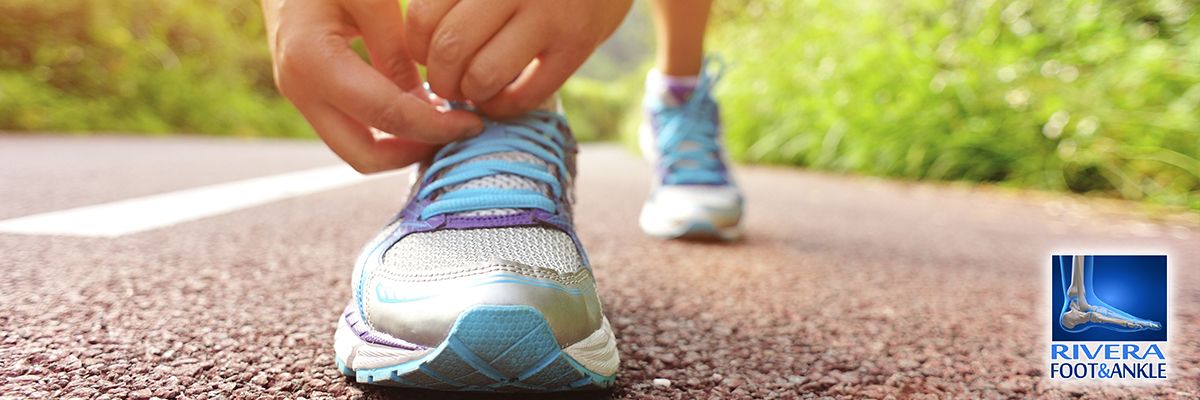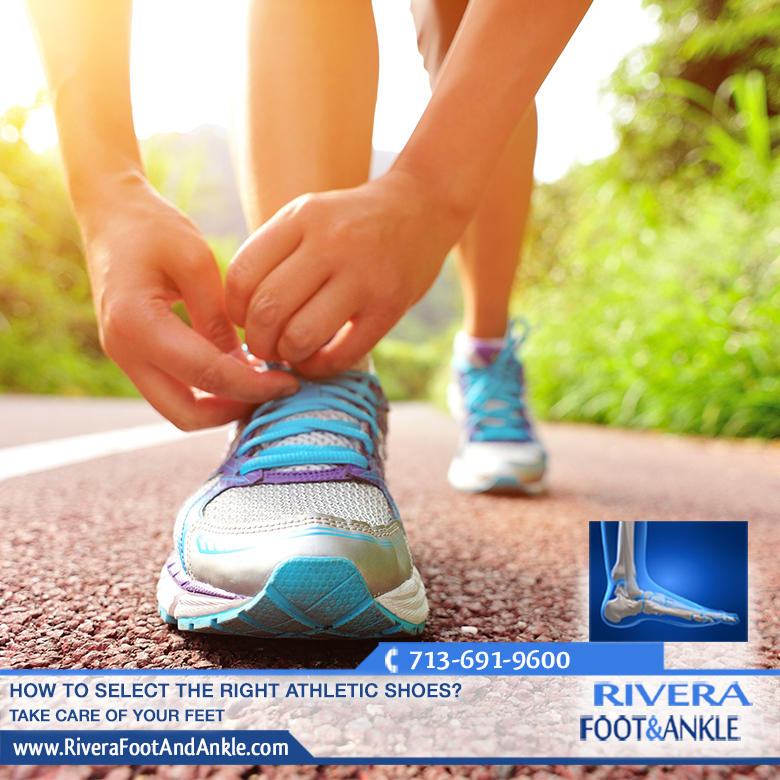
How to Select the Right Athletic Shoes
Take care of your feet
Proper-fitting sports shoes can enhance performance and prevent injuries. Follow these fitting facts when purchasing a new pair of athletic shoes.
If possible, purchase athletic shoes from a specialty store. The staff will provide valuable input on the type of shoe needed for your sport as well as help with proper fitting. This may cost a premium in price but is worthwhile, particularly for shoes that are used often.
- Try on athletic shoes after a workout or run and at the end of the day. Your feet will be at their largest.
- Wear the same type of sock that you will wear for that sport.
- When the shoe is on your foot, you should be able to freely wiggle all of your toes.
- The shoes should be comfortable as soon as you try them on. There is no break-in period.
- Walk or run a few steps in your shoes. They should be comfortable.
- Always replace the shoes you are trying on. You should begin at the farthest eyelets and apply even pressure as you create a criss cross lacing pattern to the top of the shoe.
- There should be a firm grip of the shoe to your heel. Your heel should not slip as you walk or run.
- If you participate in a sport three or more times a week, you need a sport-specific shoe.
- It can be hard to choose from the many different types of athletic shoes available. There are differences in design and variations in material and weight. These differences have been developed to protect the areas of the feet that encounter the most stress in a particular athletic activity.
Athletic shoes are grouped into categories: Running, training and walking. This includes shoes for hiking, jogging and exercise walking. For a walking shoe, look for a comfortable soft upper, good shock absorption, smooth tread, and a rocker sole design that encourages the natural roll of the foot during the walking motion. The features of a good jogging shoe include cushioning, flexibility, control and stability in the heel counter area, as well as lightness and good traction.
Court sports. Includes shoes for tennis, basketball and volleyball. Most court sports require the body to move forward, backward and side-to-side. As a result, most athletic shoes used for court sports are subjected to heavy abuse. The key to finding a good court shoe is its sole.
Field sports. Includes shoes for soccer football, and baseball. These shoes are cleated, studded or spiked. The spike and stud formations vary from sport to sport, but generally there are replaceable or detachable cleats, spikes or studs affixed onto nylon soles.
Track and field sport shoes. Because of the specific needs of individual runners, athletic shoe companies produce many models for various foot types, gait patterns and training styles.
Specialty sports. Includes shoes for golf, aerobic dancing and bicycling.
Outdoor sports. Includes shoes used for recreational activities such as hunting, fishing and boating.
RIVERA FOOT & ANKLE: At Orlando H.Rivera DPM, our priority is to deliver quality care to informed patients in a comfortable and convenient setting. When you have problems with your feet, you need to turn to a podiatrist who listens and responds… an experienced doctor who knows the field and can effectively diagnose and treat your needs… a friendly physician who counsels you on the best ways to maintain and improve your health. Our physician(s) meet all these criteria. Plus, you benefit from a dedicated team of trained professionals who give you the individualized attention you deserve.

Take care of your feet
Foot and Ankle, Dr. Orlando Rivera, Advanced Foot & Ankle Specialist, Foot and Ankle Podiatry, Houston Foot & Ankle Surgical, Treatment of Foot and Ankle, Foot & ankle specialists, Podiatrist in houston, podiatrist in houston, Orlando H.Rivera DPM, Houston Foot Doctor, Foot and Ankle Surgeon Houston, Ankle and Foot Specialist Houston, Podiatrist Houston, Foot Pain Houston.



